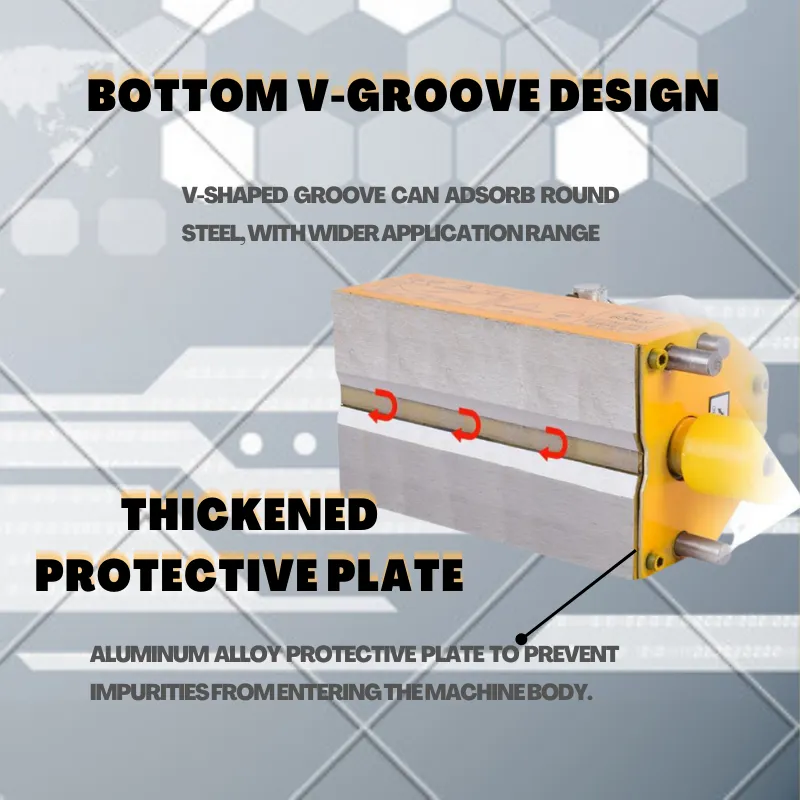gantry overhead crane
Gantry Overhead Cranes An Overview
Gantry overhead cranes are specialized lifting devices commonly used in various industrial settings to facilitate the lifting and movement of heavy materials. These cranes are characterized by their unique structure, which incorporates a bridge that spans a track and is supported by two or more legs. This design provides enhanced stability and flexibility, making gantry cranes an ideal choice for manufacturing facilities, warehouses, and construction sites.
Structure and Design
At the core of a gantry crane is its robust framework, typically constructed from steel to ensure high strength and durability. The bridge of the crane is mounted on wheels that run along fixed rails or tracks, allowing for smooth lateral movement. The gantry's legs can be either fixed or adjustable, enabling the crane to adapt to the height and width of different workloads. A hoisting mechanism, often powered by electric motors, is mounted on the bridge, facilitating vertical lifting and lowering of materials.
One of the distinguishing features of gantry cranes is their ability to operate both indoors and outdoors. Unlike traditional overhead cranes that require extensive overhead support structures, gantry cranes can be employed in open spaces, making them versatile for various applications. Their mobility allows them to cover a larger area, providing substantial reach for lifting tasks across wide layouts.
Applications
Gantry overhead cranes find applications in a multitude of industries, including manufacturing, shipping, and construction. In manufacturing plants, they are commonly used for assembling heavy machinery and parts, as well as moving products through different stages of production. Their ability to lift heavy loads with precision makes them indispensable in ensuring efficiency and safety in the workplace.
In shipping and logistics, gantry cranes play a crucial role in container handling at ports. They efficiently lift containers from ships and position them on transport vehicles or storage facilities. The sheer power and capacity of gantry cranes allow for quick turnaround times, boosting productivity in busy shipping environments.
gantry overhead crane

Construction sites also benefit significantly from the versatility of gantry cranes. They are used to lift and position materials such as concrete, steel beams, and heavy equipment, minimizing physical strain on workers and enhancing safety. The ability of gantry cranes to traverse large areas makes them ideal for multi-stage construction projects.
Safety Features
Safety is a primary concern when operating heavy machinery, and gantry cranes are equipped with several features to mitigate risks. These cranes typically incorporate limit switches, emergency stop buttons, and overload protection systems to prevent accidents. Regular inspection and maintenance are also crucial to ensure the cranes function effectively and safely. Employees are required to undergo thorough training to operate these machines competently and to understand the safety protocols associated with their use.
Advantages Over Other Types of Cranes
Gantry cranes present several advantages over other types of lifting equipment, such as traditional overhead cranes and forklifts. Their ability to be customized in terms of size and capacity allows them to cater to specific operational needs. Moreover, they often require less installation time and infrastructure than overhead cranes, leading to lower initial costs for businesses. The flexibility in movement and the capacity to handle large loads with ease make gantry cranes a preferred choice in many operational settings.
Conclusion
Gantry overhead cranes play an essential role in modern industrial operations, offering efficient, safe, and flexible solutions for material handling. Their robust design, coupled with their versatility across various applications, underscores their importance in enhancing productivity. As industries continue to evolve, the demand for innovative lifting solutions like gantry cranes will undoubtedly grow, further cementing their position as vital tools in the workplace.
-
Portable 2000 lb Gantry Crane | Heavy-Duty & AdjustableNewsAug.30,2025
-
Versatile Lifting Solutions with Gantry and Overhead CranesNewsAug.29,2025
-
The Versatile Mobile Gantry Crane SolutionNewsAug.29,2025
-
Reliable Movement with Heavy Machinery Skates and RollersNewsAug.29,2025
-
Reliable Lifting Performance with 2000 lb Gantry Crane and 2 Ton Overhead SystemsNewsAug.29,2025
-
Maximize Lifting Efficiency with PML Magnetic LiftersNewsAug.29,2025
-
Efficient Relocation Starts with Reliable Machinery MoversNewsAug.29,2025
